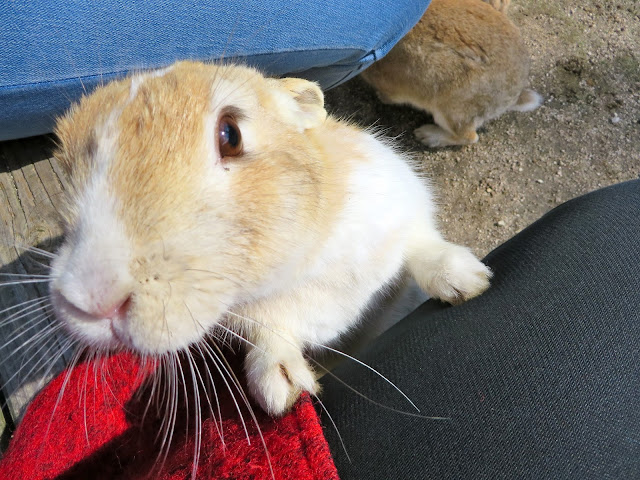This weekend is the start of Chuseok (Korean mid-fall holiday)! 추석 잘 보내세요! My friend invited me to celebrate the holiday with her and her Korean teachers who were having a Chuseok party/Korean conversation table this Friday. It felt a little awkward speaking Korean again, but I soon warmed up to the topic at hand: Kpop. One of the Korean teachers caught us watching Ikon's new music video and asked why we think so many international audiences love Kpop.
It's a question I've often asked myself: why is Kpop so addicting? The first answers that come to mind for most people are production value and talent. Korea's entertainment industry is highly competitive and regimented. Most groups produce few full-length albums, but many singles and mini-albums. Under this system, companies are able to throw huge amounts of money into a single music video. At the same time, artists train under a company anywhere from two to seven years before even debuting. The intensive training in singing, dance and grooming means every group has a certain level of excellence. These are all important aspects of Kpop's magnetism, but I think this answer is misdirecting — as our Korean teacher said, Bruno Mars is also a very talented singer and dancer.
Another answer can be found in Euny Hong's The Birth of Korean Cool, which came out in 2014 in the wake of Psy's "Gangnam Style." Personally, I have many problems with the book as it hastily glosses over many of the details and implications of the case studies it presents (perhaps in an effort to be published while still relevant — already in 2014 Psy felt like old news in the swiftly changing Korean pop-culture market). Hong answers the Kpop question with two words: government marketing.
She argues that Kpop has achieved the worldwide success it has due to aggressive government branding, intervention and support. As she notes, Korea has a ministry devoted to the promotion of Korean cultural products including Kpop. Besides financial support to help grow the industry (an action not as foreign as we in America might like to think, *cough* bailouts) Hong cites the compelling example of one Minister of Culture who traveled to Paris where he organized French Kpop fans into a cohesive group agitating for venues to book Kpop concerts in Paris. The issue was publicized through a Kpop dance flash mob which the Minister of Culture, and Hong, mark as a turning point in international demand for Kpop.
There's no denying that direct governmental interventions such as the case above have influenced the spread of Kpop, but it sidesteps the question of why people actually like Kpop. Even for the government to stir up demand there had to be an underlying interest.
One answer I've found is that Korean pop culture is built on a symbiotic loop that gives audiences access to idols in a constant variety of situations. In the U.S. actors turned singers and singers turned actors are both rare and rarely successful, but in Korea that kind of crossover is almost expected. By appearing regularly on variety shows, radio programs and in dramas and films idols allow fans to follow their story and build personal/emotional connections to their favorite stars. Singers in the U.S. sometimes follow similar methods (look at the huge success of the Justin Bieber documentary and continuing phenomenon), but the Korean entertainment industry is set up to support this kind of personal branding.
Most variety and reality shows — Running Man, Roommate, Happy Together, I Got Married, Law of the Jungle, Hello Counselor (the list goes on and on) — either draw their cast entirely from idols or regularly feature idol guests. At the same time, music shows like Mnet Countdown, Inkigayo, Music Bank and Weekly Idol both support and rely on the quick turnover of Kpop singles. As a further illustration of the symbiosis between the two industries, many comedians and hosts will also release singles, further blurring the line between entertainer and singer.
Through youtube and social media fans are drawn into an ever expanding loop of interest. For example, a fan of 2NE1 might watch a variety program where members of 2NE1 appeared and enjoy the show so much that the fan begins to follow show itself. Drawing the example even further, that fan might then, in the course of watching their new favorite variety show be exposed to an idol who they find particularly funny and then begin listening to that idol's music. Television and music are always working together to increase each others' viewerships. It's an amazing system and prompts viewers to become invested in their favorite idols' lives and careers. To cite the Justin Bieber phenomenon again, its success and the success of Kpop both come from viewers' thirsts for personal celebrity connections.
 |
| In Win — Who is Next? Team A and Team B competed to see who could win over the audience and make their debut. |
Win was produced by YG Entertainment as a survival competition between two groups of trainees. In the end the show asked the viewers to vote on which group they wanted to see debut the most. Eventually both groups debuted, although the group that lost had to go through another round of survival tv before that. Through this show the resulting Kpop groups — Winner and Ikon — were able to debut with large fanbases devoted to their hopes and struggles.


















































